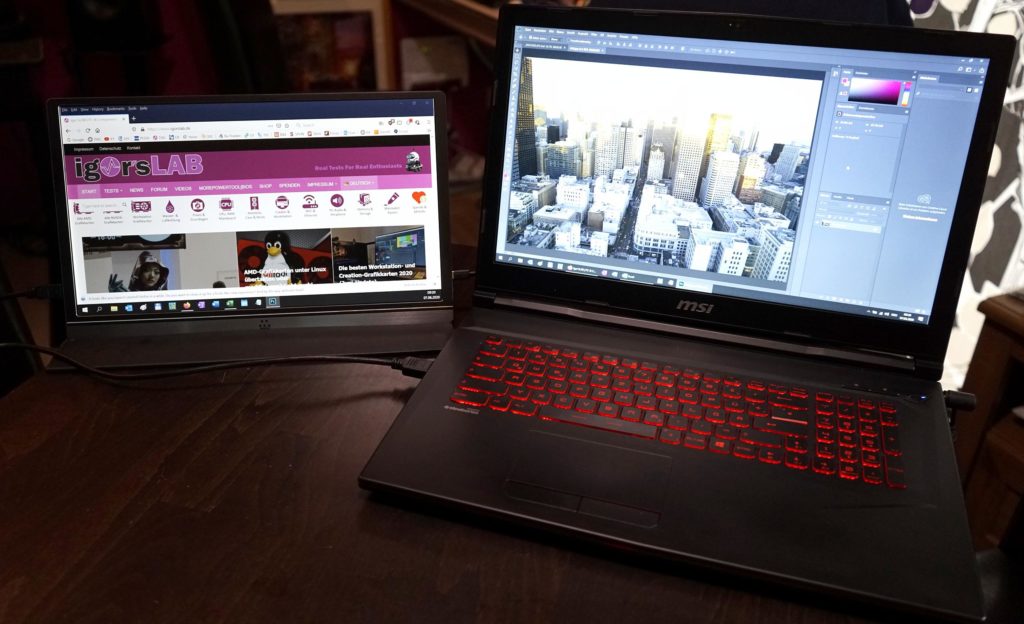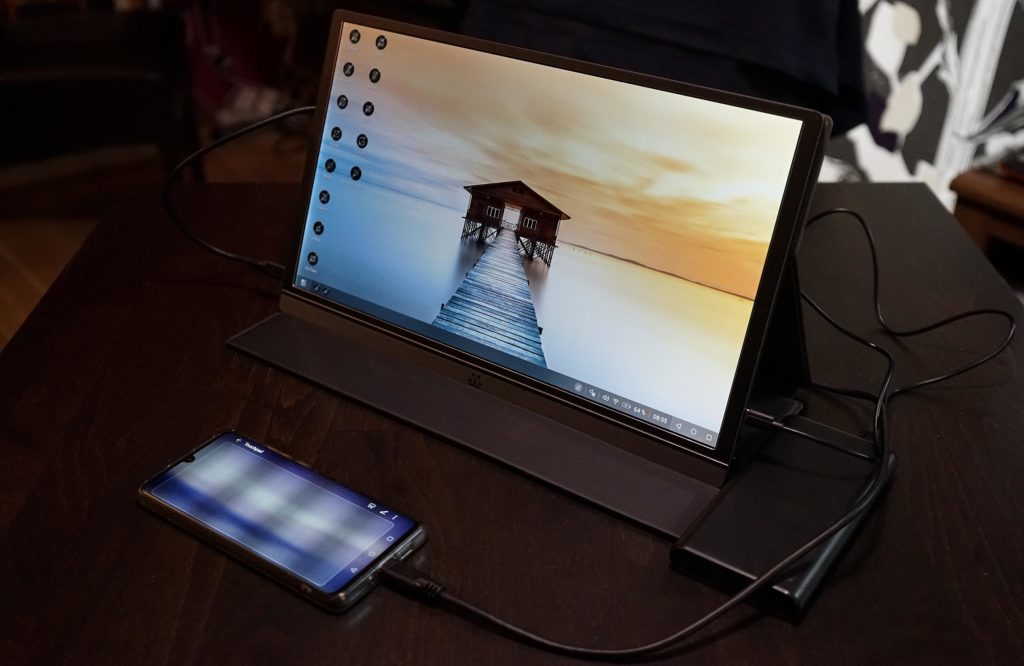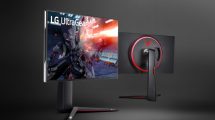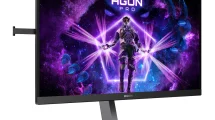Power consumption
You can either power the monitor directly via the USB-C power supply socket, whereby it makes no difference whether you use the included power supply or a Potente Powerbank. In stand-by mode it is not even 40 mW, which is an excellent measured value. In regular operation, up to 5 watts are then required in the factory setting. If you use the connection to the smartphone and do not have a separate power supply, the smartphone will also supply the monitor if desired. However, just under one ampere is not a small final value, because over an hour, you have to calculate approx. Add 1000 mAh only for the screen.
| Energy Save Mode | 0.035 watts |
| Without signal | 0.621 watts |
| Standard mode (default) | 5.010 watts |
| Maximum brightness | 6.217 watts |
Brightness, viewing angle and colour rendition
The manufacturer advertises with 300 cd/m², which does not quite match the measured 250 cd/m². But if you consider that you are usually only able to 5 watts, you can leave it as it is. With the Asus monitor it was even only a good 200. The viewing angle is a little bit small in the horizontal plane, but you can get over it. The rest of it fits.
The thing about colours is. It may be necessary to the OSD, whereby one has to admit to the manufacturer that the contrast and brightness were almost optimally adjusted at the factory. I was only bothered by the slight red cast, which could be repaired quite quickly. The color space is not big and for the image processing I prefer to use the calibrated laptop monitor with its own color profile, but for the second window with web browser, Excel or Skype it fits.
Usability and practical use
You need two cables on the notebook if you don’t succeed in connecting the monitor via Type-C at first go, but fall back on HDMI. Then you either have to connect the monitor with two cables (HDMI for the picture, Type-C for the power supply) or at least use the power bank. I had already written something for the manual pivot replacement, but unfortunately it doesn’t work that way. Nevertheless, such a second screen on the notebook is really a pleasure, because you can also connect it to a WQHD notebook in Full-HD and play with two monitors in different resolutions. However, Nvidia’s Optimus then switched to the GeForce permanently, which drives the power consumption up.
The use on the smartphone is already smarter. Together with a fat power bank, this even works for hours as a fine notebook replacement if the smartphone is operated in touch panel mode. If you don’t want that, you can also pair a Bluetooth mouse or even a Bluetooth keyboard. Then you almost have a desktop feeling. Because video conferences definitely don’t work with a smartphone in touch panel mode. The person opposite sees only the ceiling and occasionally a finger.
But I had imagined the actual purpose of use differently and I don’t want to hide this from you. With the HDMI cable and supply via e.g. the USB-C I use the part meanwhile mainly in the laboratory. Either as a large monitor for the oscilloscope (in this case the display switches to 4:3 format) or on the benchtables, if you need to get into the BIOS quickly. You no longer need a large monitor, but can also be quickly and flexibly positioned under the table to pick up signals.
On my video camera, the part runs as a second display, so I don’t have to start the PC all the time if I want to position the camera a bit more precisely. Also this possible application only came to my mind during the daily use and in the end I am really glad that the part up there exists in the lab and can be used so nicely.
Summary and conclusion
The USB monitor from M MEMTEQ is similar to the Lepow Z1, which you can also buy in North America. In terms of price, this is about the same in everything, but at just under 200 euros including VAT. usually well below the offer of the brand suppliers. The M MEMTEQ does not have to hide, because this is solid craftsmanship, even if the finish sometimes shows even minor weaknesses. I’m convinced by the power consumption, compatibility and, after calibration, also the image quality of the display, which is quite well reflective. But you have to invest a few minutes in fine-tuning if you are not colour-blind.
At 770 grams, the monitor is not yet a brick, but it is not a lightweight either. It is a pity that one does without internal accumulators, as I would have liked to buy it even with an extra charge. But this is how the (almost eternal) Powerbank has to fix it, but it works too.
The gadgets tested by me are, as long as not explicitly stated, all devices from my private inventory or have been acquired for test and application purposes or have been borrowed in a private environment. Advertorials, on the other hand, will of course be marked as such if they are the same

































Kommentieren